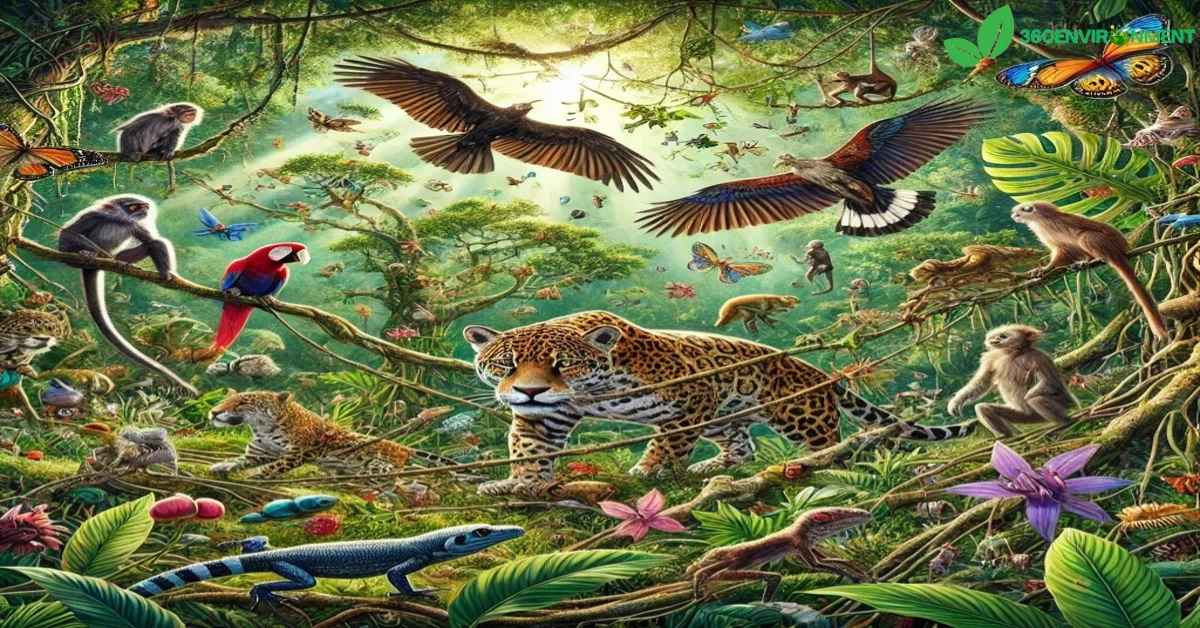The rainforest is one of the most diverse and vibrant ecosystems on Earth, home to millions of species of plants, animals, and microorganisms. These organisms are connected through a complex food web, an intricate system of energy transfer where every species plays a vital role. The food web of rainforest is not only a marvel of nature but also a key component in maintaining the planet’s ecological balance and biodiversity.
In this article, we’ll dive deep into the food web of rainforest, exploring the various levels of the food chain, the interactions between different species, and the importance of this delicate balance. By understanding the food web of rainforest, we can better appreciate its ecological significance and the urgent need for conservation.
1. What is a Food Web?
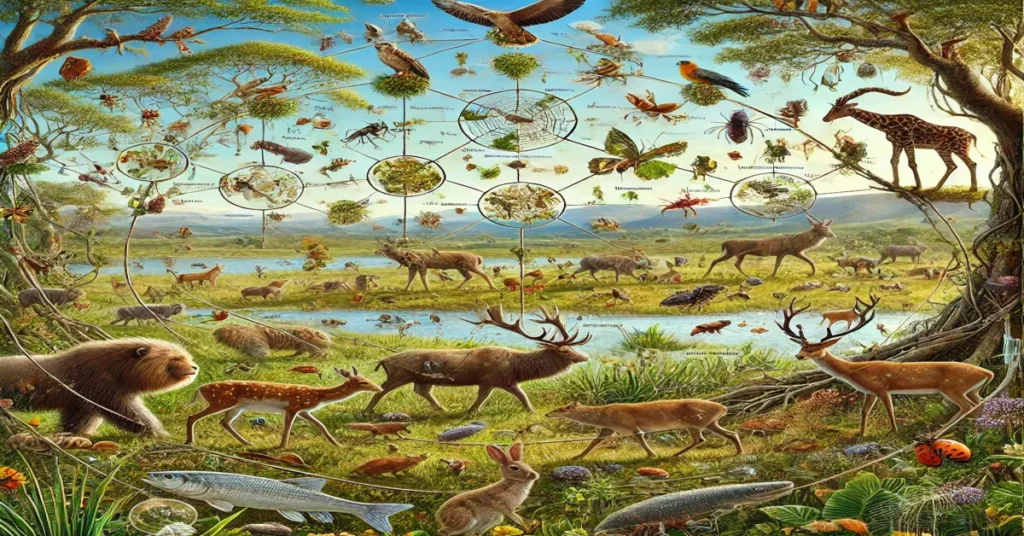
A food web is a representation of the various feeding relationships between organisms within an ecosystem. Unlike a simple food chain, which shows a linear progression of energy transfer from one organism to the next, a food web displays multiple interactions and connections between species. This complex network illustrates how energy flows through an ecosystem, beginning with producers and moving through various consumers.
The food web of rainforest is particularly intricate due to the sheer biodiversity of the environment. In a tropical rainforest, thousands of species interact with one another, creating multiple pathways for energy flow. These species are interdependent, meaning that the survival of one organism often relies on the existence of many others.
2. The Structure of the Rainforest Food Web
The food web of rainforest can be broken down into several trophic levels, each representing a different group of organisms that play specific roles in the flow of energy. These levels include:
- Producers: The foundation of the food web, primarily made up of plants and other photosynthetic organisms.
- Primary Consumers: Herbivores that feed on plants and other producers.
- Secondary Consumers: Carnivores or omnivores that prey on primary consumers.
- Tertiary Consumers: Apex predators that are at the top of the food chain, feeding on both primary and secondary consumers.
- Decomposers: Organisms that break down dead plants and animals, returning nutrients to the ecosystem.
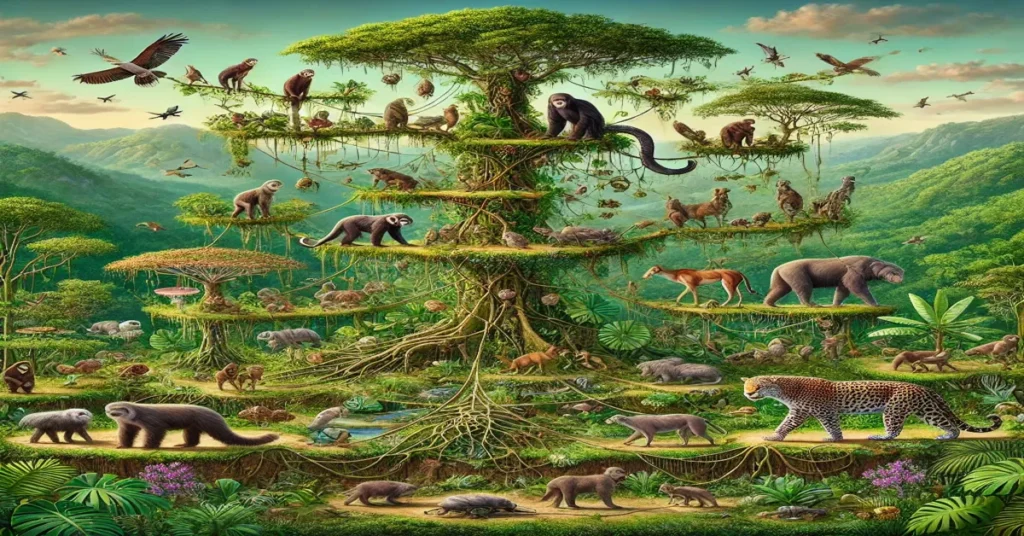
2.1. Producers: The Foundation of the Food Web
In the food web of rainforest, producers are primarily plants, which convert sunlight into energy through the process of photosynthesis. These plants include towering trees, shrubs, ferns, mosses, and other vegetation that thrive in the warm, humid climate of the rainforest. Some of the most important producers in the food web of rainforest include:
- Trees: Canopy trees, such as the kapok tree or Brazil nut tree, form the backbone of the rainforest ecosystem. These trees provide not only food but also habitat for countless species.
- Epiphytes: These are plants that grow on other plants, such as orchids and bromeliads. They gather nutrients from the air, rain, and debris that accumulates around them.
- Ferns and Mosses: These plants thrive in the damp understory of the rainforest, contributing to the food supply for herbivores.
- Algae: Algae can also be found in rainforest rivers and streams, providing a food source for aquatic organisms.
These producers form the base of the food web of rainforest, supporting all other trophic levels by converting solar energy into food.
2.2. Primary Consumers: Herbivores of the Rainforest
Primary consumers are herbivores that feed directly on the producers. In the food web of rainforest, there is a diverse array of herbivorous animals, from insects to large mammals. Some key primary consumers in the food web of rainforest include:
- Insects: Insects like ants, caterpillars, and beetles are some of the most common herbivores in the rainforest. They consume leaves, nectar, and other plant materials, forming a crucial link between plants and higher trophic levels.
- Birds: Fruit-eating birds, such as toucans and parrots, are also important primary consumers. These birds help disperse seeds throughout the forest, ensuring the growth of new plants.
- Monkeys: Many species of monkeys, such as howler monkeys and spider monkeys, are frugivores, meaning they primarily eat fruit. These animals play a key role in seed dispersal and plant propagation.
- Rodents: Rodents like agoutis feed on nuts and seeds, often burying them, which contributes to tree regeneration in the rainforest.
These herbivores are essential to the food web of rainforest, as they consume plants and serve as prey for higher-level predators.
2.3. Secondary Consumers: Carnivores and Omnivores
Secondary consumers in the food web of rainforest are typically carnivores or omnivores that feed on primary consumers. These animals may hunt herbivores or scavenge for food, depending on their ecological niche. Some common secondary consumers in the food web of rainforest include:
- Frogs and Reptiles: Many species of frogs, snakes, and lizards prey on insects and small mammals in the rainforest. For example, the poison dart frog is a voracious insect eater, and snakes like the boa constrictor feed on small mammals and birds.
- Birds of Prey: Raptors like hawks and eagles hunt smaller birds, rodents, and other animals, making them important secondary consumers.
- Carnivorous Mammals: Small carnivorous mammals like ocelots and coatis feed on rodents, birds, and insects.
These secondary consumers play an essential role in controlling the population of herbivores, ensuring that the plant life in the food web of rainforest is not overgrazed.
2.4. Tertiary Consumers: Apex Predators
At the top of the food web of rainforest are the tertiary consumers, or apex predators. These animals have no natural predators and are critical for maintaining the balance of the ecosystem. Some key apex predators in the food web of rainforest include:
- Jaguars: Jaguars are one of the top predators in the Amazon rainforest. They hunt a variety of prey, including capybaras, deer, monkeys, and even caimans.
- Harpy Eagles: One of the largest and most powerful birds of prey in the world, harpy eagles feed on monkeys, sloths, and other large animals.
- Caimans: These crocodilian reptiles are top predators in the rivers and wetlands of the rainforest, feeding on fish, birds, and mammals.
As apex predators, these animals regulate the populations of other species in the food web of rainforest, preventing any single species from becoming too dominant.
3. Decomposers: Recycling Nutrients in the Rainforest
An often-overlooked but crucial part of the food web of rainforest is the role of decomposers. Decomposers break down dead organic material—plants, animals, and waste—returning nutrients to the soil. Without decomposers, the forest floor would be littered with dead matter, and the soil would become depleted of the nutrients needed to support plant growth.
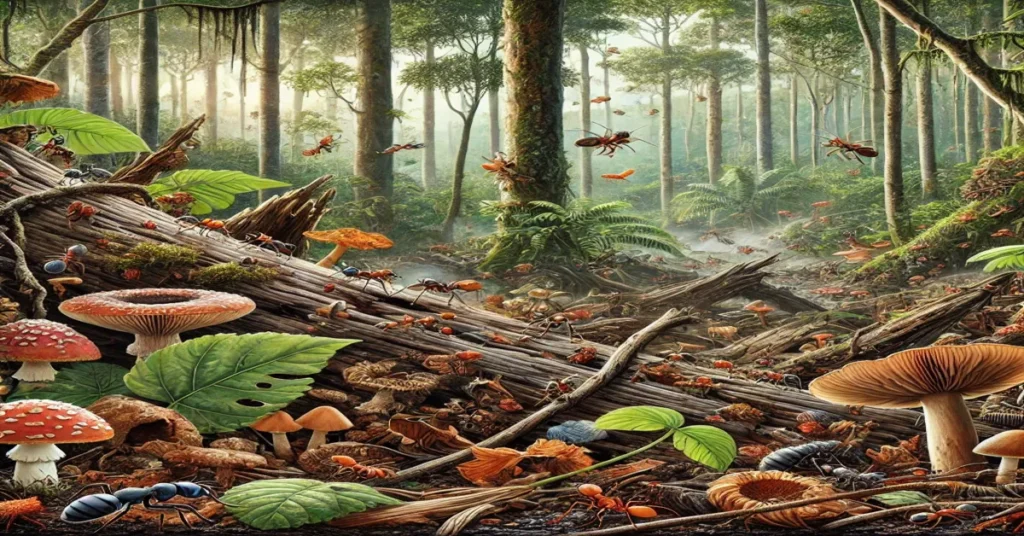
3.1. Fungi
Fungi are one of the most important decomposers in the food web of rainforest. They break down dead plant and animal matter, helping to recycle nutrients back into the ecosystem. Some fungi form symbiotic relationships with plants, aiding in nutrient absorption through the roots.
3.2. Bacteria
Bacteria also play a key role in decomposition. These microorganisms break down organic matter at a microscopic level, further contributing to nutrient cycling. They thrive in the warm, moist environment of the rainforest and can be found in soil, water, and decaying matter.
3.3. Invertebrates
Many invertebrates, such as earthworms, ants, and termites, help break down organic material. Termites, in particular, are essential for decomposing dead wood in the rainforest, converting it into humus, which enriches the soil.
Decomposers are vital for maintaining the health of the food web of rainforest. By recycling nutrients, they ensure that the plants at the base of the food web have access to the nutrients they need to grow and sustain life.
4. The Interconnectedness of the Rainforest Food Web
One of the defining characteristics of the food web of rainforest is its complexity. The multitude of species and interactions within this ecosystem means that every organism is interconnected. A change at one level of the food web of rainforest can have ripple effects throughout the entire system.
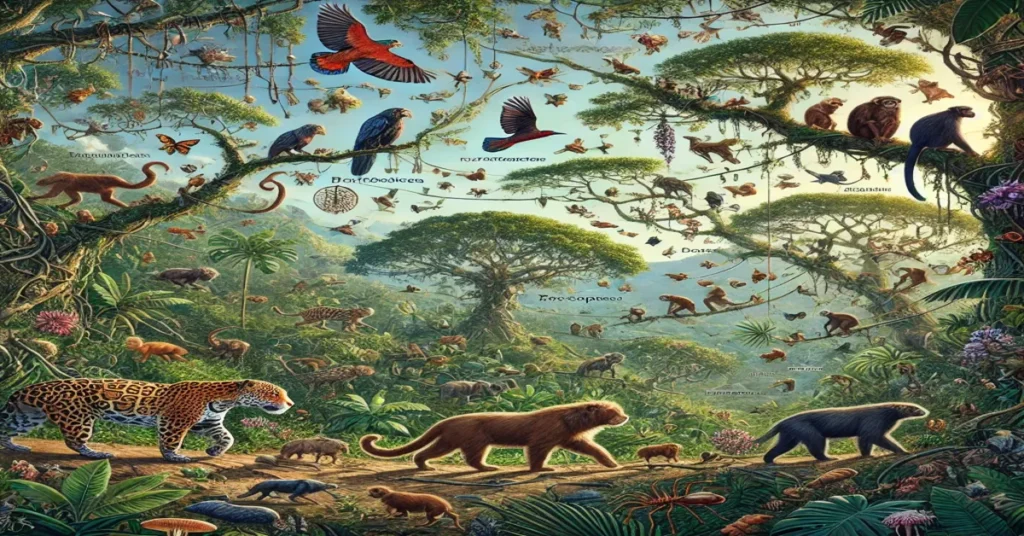
4.1. Keystone Species
Certain species within the food web of rainforest are known as keystone species—species that have a disproportionately large impact on their environment relative to their population size. Jaguars, for example, are keystone species because they regulate the populations of herbivores and secondary consumers, preventing them from overgrazing or depleting resources.
If a keystone species is removed from the food web of rainforest, the balance of the ecosystem can be disrupted, leading to negative consequences for the entire rainforest.
4.2. Mutualism and Symbiosis
Many species within the food web of rainforest engage in mutualistic relationships, where two organisms benefit from interacting with one another. For example, some species of ants protect certain plants from herbivores in exchange for food or shelter provided by the plant. These symbiotic relationships add another layer of complexity to the food web of rainforest, demonstrating that not all interactions are strictly predator-prey.
5. Threats to the Rainforest Food Web
The food web of rainforest is a delicate balance, and human activities have put this intricate system at risk. Deforestation, climate change, and habitat destruction are some of the most significant threats to the food web of rainforest.
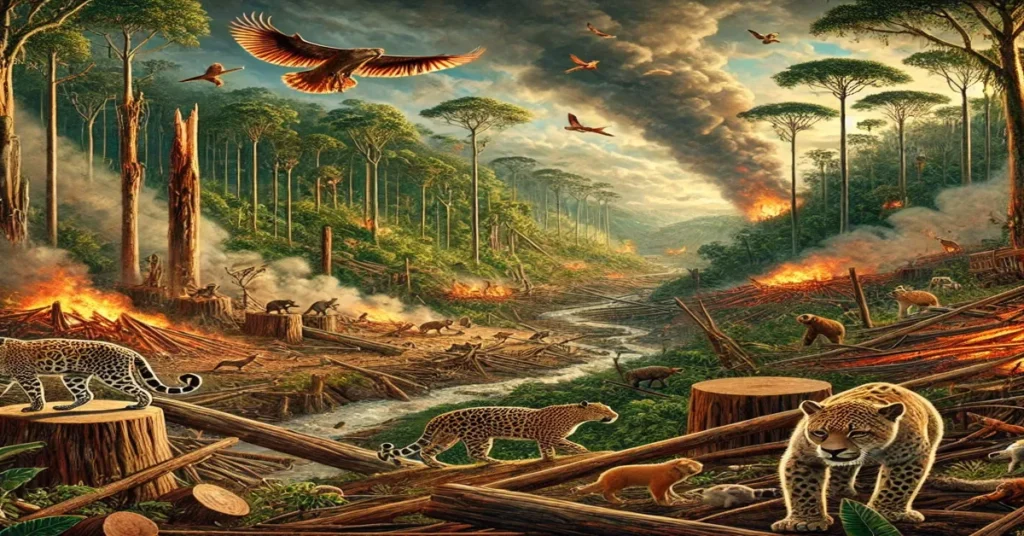
5.1. Deforestation
As rainforests are cleared for agriculture, logging, and infrastructure development, entire food webs of the rainforest are disrupted. When trees are cut down, primary consumers lose their food sources, and higher-level predators lose their prey. The loss of habitat can lead to declines or extinctions of species, destabilizing the food web of rainforest.
5.2. Climate Change
Climate change is affecting rainfall patterns, temperatures, and biodiversity in the rainforest. As temperatures rise and weather patterns become more unpredictable, the balance of the food web of rainforest is disturbed. Some species may migrate to cooler areas, while others may not survive the changes, leading to shifts in the composition of the ecosystem.
6. The Importance of Conserving the Rainforest Food Web
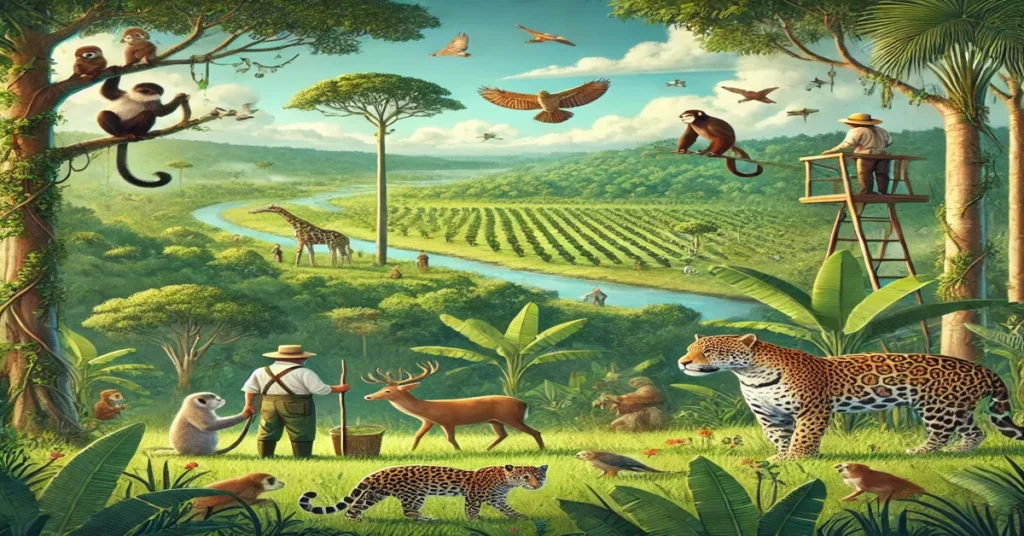
Conserving the rainforest and its food web is essential for maintaining global biodiversity and ecosystem health. The food web of rainforest plays a critical role in regulating the planet’s climate by absorbing carbon dioxide and releasing oxygen. Additionally, the species that make up the food web of rainforest contribute to the development of medicines, foods, and other resources used by people worldwide.
By protecting the rainforest, we safeguard not only the organisms within it but also the ecological processes that sustain life on Earth.
Conclusion: The Vital Importance of the Rainforest Food Web
The food web of rainforest is a complex, interconnected system of life that supports millions of species. From towering trees to tiny insects, every organism plays a role in maintaining the balance of this remarkable ecosystem. As humans, we are deeply connected to the health of the rainforest, whether through the air we breathe, the food we eat, or the medicines we use.
The loss of even one species from the food web of rainforest can have profound consequences for the entire ecosystem. Therefore, it is imperative that we take action to conserve and protect the rainforests, ensuring that this intricate food web continues to thrive for generations to come.
FAQs
- What is a food web in the rainforest?
A food web in the rainforest is a complex system of interconnected feeding relationships between plants, herbivores, carnivores, omnivores, and decomposers. - What is the role of decomposers in the food web of rainforest?
Decomposers, such as fungi and bacteria, break down dead organic material and recycle nutrients back into the soil, supporting plant growth. - Who are the primary consumers in the food web of rainforest?
Primary consumers are herbivores that feed on plants, such as insects, monkeys, birds, and rodents. - What are apex predators in the food web of rainforest?
Apex predators, such as jaguars and harpy eagles, are at the top of the food chain, with no natural predators. - How does deforestation impact the food web of rainforest?
Deforestation disrupts the food web of rainforest by destroying habitats, reducing food sources, and causing species declines or extinctions. - Why is the food web of rainforest important for global biodiversity?
The food web of rainforest supports millions of species and plays a crucial role in maintaining global biodiversity and ecological balance.
Read More: Growing Clethra Alnifolia Rosea from Seed: A Sustainable Approach to Cultivating a Native Shrub

